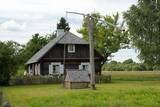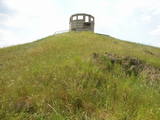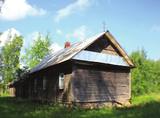| Nr | Name | Beschreibung |
|---|---|---|
|
Der elterliche Hof des Poeten Jonas Mačiulis-Maironis (1862-1932) in Pasandravys, die Dörfer Pasandravys und Bernotai mit der Filiale des Regionalmuseums Raseiniai sind als Geschichtsschutzgebiet ausgewiesen. Das geschützte Gebiet ist Bestandteil des Regionalparks Dubysa. |
||
|
The tour introduces a variety of attractions and values outside big cities revealing the true character of the countries. Visitors will experience the beauty of nature in national parks, charming ambience of rural manors, visit traditional rural farms and skilful traditional artisans and craftsmen. |
||
|
uf den Pfaden erfährt man die Geschichte des Ortes vom Rückzug der Gletscher, die die eindrucksvolle Gletschermulde der Gauja ausgebildet haben. Sandsteinaufschlüsse geben Einblicke in eine hunderte Millionen Jahre alte Geschichte: Das Zeitalter des Devon, dass auch das “Zeitalter der Fische” genannt wird.
|
||
|
1855, als einen Schiffahrtsweg getieft wurde, wurde im Haff unerwartet eine Bernsteinablagerung gefundet. In der Zeit zwischen 1860 und 1890 wurde dort 2250 Tonen Bernstein gewonnen, einbezogen einzigartige Bernsteingegenstände aus der Jungsteinzeit und der Bronsezeit. |
||
|
Leimaņu ciems ir sācis veidoties 20.gs. sākumā kādreizējā kroga apkārtnē. Vienā no tās vēsturiskajām ēkām atrodas arī amatu māja "Rūķīši". Ēkā ir dažādas tematiskās istabas - aušanas, novadpētniecības, maizes, saimes, senlietu un Ulmaņlaika istaba. Viesiem ir iespēja aplūkot un iemācīties maizes mīcīšanas un tapšanas procesu, izstaigāt Latvju zīmju parku, iepazīties ar Leimaņu pagasta vēsturi un iemēģināt roku aušanas procesā. |
||
|
In gewisser Hinsicht einzigartiges mehr als 24 400 Hektar großes Territorium nutzte die sowjetische Armee als Militärversuchsfeld des Kriegsluftfahrtes mit den Übungszielen. Die Geschichte des Militärversuchsfeldes beginnt mit dem Jahr 1951. Damit das Territorium für solches Ziel geiegnet würde, wurden vier hier Kolchosen aufgelöst, viele Wege gesperrt, mehrere Hunderte Bauernhöfe und Einzelhöfe soltten umsiedeln. Die Bewegung der Zivilpersonen wurde nur im Jahr 1993 teilweise erneuert, nachdem mehrere neue Wege aufgebaut worden sind. Wenn man eine allumfassende Ansicht auf die Waldkomplexe des ehemaligen Militärversuchsfeldes sehen will, sollte man auf das künstlich gebildeten Hügel sogennaten „Hünengrab der Offiziere” hinaufsteigen. Von diesem Hügel koordinierten die Kommandeure die Truppenübungen der Armee. Es empfiehlt sich nicht auf die „unwegsame Wanderungen“ zu gehen!
|
||
|
Der Bauernhof Lõosilma befindet sich nur 10 km von Pärnu entfernt und beschäftigt sich mit dem Anbau und der Verarbeitung landwirtschaftlicher Produkte. In der Küche des Bauernhofs werden aus den geernteten Gemüsen reichhaltige Konserven zubereitet. Viele davon sind mit einer Bezeichnung des nationalen Geschmacks ausgezeichnet. Der Bauernhof verfügt über einen Camper-Parkplatz, der mit Solarenergie betrieben wird. |
||
|
Das Café Pärnamäed befindet sich an der Landstraße Via Baltica 10 km von Pärnu in Richtung Riga. Es spezialisiert sich auf Süßwaren, das Backen von Weißbrot und Schwarzbrot ohne Konservierungsstoffe und bietet auch Produkte verschiedener Kleinproduzenten an. Das Café bietet auch Suppen, Hauptgerichte und Desserts an. |
||
|
Paramonovas Old-Believer Preaching House was built in
1882.
|
||
|
Found in the northern part of Cesvaine, the church was built of fieldstones in the Neo-Gothic style in 1879 by the architect Paul Max Bertschy. The church was restored in 1929 and again in the early 1990s. The altar painting, “Christ on the Cross” (1923) is by Jēkabs Bīne.
|
||
|
Die Kirche befindet sich im Westen von Viesīte – an der Seite der Kaļķu Straße, auf dem sogenannten Hügel Vales kalniņš (eine vom Gletscher gebildete Hügelreihe). Es ist interessant, dass an diesem Ort im Jahr 1919 die Verteidiger von Viesīte die Bermondt-Armee geschlagen haben. Der Grundstein der Kirche wurde am 15. August 1937 (am Gedenktag der Helden) gelegt, im Jahr 1939 wurde die Kirche eingeweiht, aber im Jahr 1994 – erneuert. Den Bau des Gotteshauses hat der Professor Pauls Stradiņš unterstützt. In dem Gotteshaus befindet sich das von Ligita Caune geschaffene Altargemälde. Östlich von der Kirche – am Fuße des Hügels Vales kalniņš – ist ein Denkmal aufgestellt, der dem Professoren Pauls Stradiņš gewidmet ist. |
||
|
Der Laden des Bauernhofs Lepaniidi befindet sich nur 15 Autominuten von Kärdla entfernt. Im Bauernhof werden Ziegen und Schafe gezüchtet sowie verschiedenes Gemüse angebaut. |
||
|
Seit den 70er Jahren des 20.Jh. befindet sich diese auf der kleinen Insel des hl. Meinhards im Staubecken des Rigaer Wasserkraftwerkes. Die hier zu sehenden Baureste sind die Ruine des ältesten Steinbaus Lettlands. Der Bau der Kirche wurde 1184 begonnen, sie wurde mehrfach umgebaut und zerstört, zuletzt 1916. Heute ist die Ruine des Gotteshauses konserviert, es befindet sich eine Metallüberdachung darüber, die Ufer der Insel sind befestigt. Auf der Insel ist ein 10m hohes Kreuz errichtet (Künstler E. Samovičs) und ein Steinaltar (Bildhauer J, Karlobs) |
||
|
Gebaut am Ende des 13. Jh. als eine dreischiffige Basilika im romanischen Stil mit gotischen Elementen. 1853 wurde der 65 m hohe Turm aufgebaut (Aussichtsplatz). In der Kirche befinden sich die Grabsteine der livonischen Bischöfe, Kanzel (1748), Altar aus Eichenholz (1858), Altarbild (1862), Buntglasfenster und eine der besten Orgeln Lettlands (1907). |
||
|
This is the oldest arboretum in Latvia. It was planned by the owner of the Skrīveri Estate, Maximmilian von Sievers (1857-1919). It has to be said that before World War I, there were two times more species of plants in the park than is the case now. The plants are grouped in accordance with the geo-botanic regions of the world. There are trails in the park, and signs showing the Latvian and Latin name of each plant are there, as well. There’s a fountain which is operated from every hour on the hour from 11:00 AM until 11:00 PM from Tuesday until Sunday. On the other side of the Rīga-Daugavpils highway is the Skrīveri Forest Park with hiking trails.
|
||
|
Das Wirtshaus befindet sich im Schloss von Mezotne und bietet köstliche und feine Speisen und Getränke an. Es ist wert, sowohl die prachtvolle Innenausstattung des Schlosses, als auch einen der schönsten englischen Landschaftsparks in Lettland zu besichtigen. Lettische Küche: Kartoffelpfannkuchen, eingelegte Heringsrollen, Forelle mit Kartoffel in der Montur, gebratene Blutwurst mit Preiselbeersoße, graue Erbsen mit Speck, geschichtetes Roggenbrot-Dessert mit Moosbeerenmarmelade und Schlagsahne. Das besondere Gericht: Taler von Bauska: Schweinefleisch in der Form eines Talers mit Soße aus Bier von Bauska. |
||
|
Mūsu saimniecībā iespējams ganīties, vārtīties, skrieties un spelēties kopā ar kazām. Ja kādam no šāda piedāvājuma dūša papēžos, iespējams apskatīt trušu saimi. Tā kā tie ir truši, tad kopā ganīšanās un spelēšanas te iet secen. Ekskursijas noslēgumā mūsu saimniecībā saražoto gardumu nogaršosana. Ja kas īpaši gājis pie sirds, to var arī iegādāties. Sniegotā ziemā piedāvājumā pārgājiens uz strautu un smilšakmens alu burvīgu āžu un kazu sabiedrībā kā noslegumā, lai sasilditos, kopīga ugunskura tējas baudīšana- tējas biezumi jāatdod āžiem (viņiem tie ļoti garšo!). Nelielām kompānijām iespēja sasiet savu personalizēto kazu piena sieru. Ideāli- jaunlaulātiem kopīgiem spēkiem izveidot savu sieru, tā teikt- pirmais kopīgais produkts.
|
||
|
Der Name der Stadt ist in den historischen Quellen zum ersten Mal 1224 erwähnt worden. Im Jahr 1340 hat der Erzbischof von Riga auf dem Burgberg (heute – evangelisch-lutherische Kirche) der Letgallen eine Burg gebaut. Im Jahr 1802 hat das Landgut von Vecgulbene Baron von Wolf (im Besitz bis 1920) gekauft. Die Landgüter der Umgebung von Gulbene und Vecgulbene haben unter der Revolution von 1905 und auch unter anderen weiteren historischen Ereignissen wesentlich gelitten. Heute ändert sich die Landschaft der Stadt sehr stark, besonders in der Gegend des Weißen Schlosses, wo in den letzten Jahren große Restaurationsarbeiten durchgeführt worden sind. Auf jeden Fall ist Gulbene ein Ort, wo man neue Eindrücke sammeln und Kenntnisse erwerben kann. |
||
|
An der rechten Uferbiegung an der Mündung der Inčupe erhebt sich die bis zu 18 m hohe weiße Düne, die malerischste Ausgestaltung von Wind, Sand und Meer an der Küste der Rigaer Bucht - ein alter Orientierungspunkt der Seefahrer. Ein Stegpfad mit Aussichtsplattform. Das Gebiet südlich von Inčupe liegt im Naturpark Piejūra.
|
||
|
The craftsman produces gravestones, commemorative plaques and stone sculptures on the basis of orders from clients. He is prepared to tell you about a stonemason’s work and demonstrate his skills. |
||




















